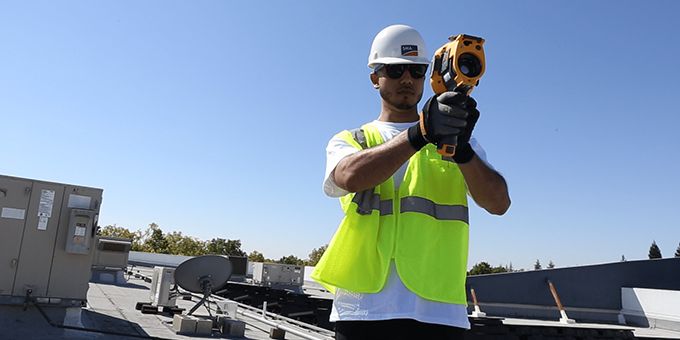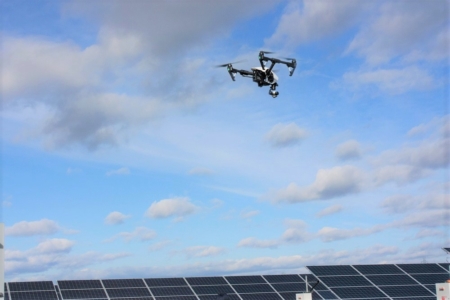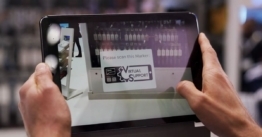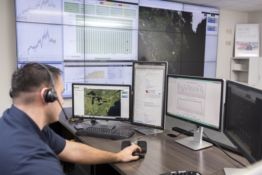Be it enterprise-level, commercial or utility-scale, field service plays a vital role for maintenance and repair. The availability of technology enriches performance and operations in various ways.
 Four Innovative Ways Solar Professionals Can Use Emerging Technology in Field Service
Four Innovative Ways Solar Professionals Can Use Emerging Technology in Field Service

Trish Moratto for | SMA
Across the solar industry, there are a wide variety of field service applications involved with energy and power solutions.
Be it enterprise-level, commercial or utility-scale, field service plays a vital role for maintenance and repair. The availability of technology enriches performance and operations in various ways.
The constant need for efficiency motivates industry leaders to evaluate which technological advancements provide opportunities to optimize. Through innovation and self-solve tools, customers can cut costs and handle some maintenance by leveraging manufacturer supplied resources catered to their own industry and expertise.
Here are four ways we see tech innovation impacting the PV field service industry.
Aerial Thermography
Drones are used across many industries and are becoming popular for field service. Drones and aerial thermography are transforming commercial, utility and storage installation service. Within solar field service, historically, technicians had to manually review sites for hot spots in a PV array. Drones have the capacity to fly over projects and take thermal readings from above.

This type of technology is now utilized to maintain optimal array performance. A properly maintained solar system can increase yields by as much as 30 percent and accelerate return on investment. With aerial thermography, maintenance can be more accurate, faster, and cost-effective than in the past.
SMA has FFA-certified experts working with the field service team to make aerial thermography available through plantwide operations and maintenance services. Using drones, issues can be detected down to the cell level. This technology is critical as the identification of these hot spots can indicate more problems or future issues in process. When aerial thermography is utilized, time is saved with diagnosis and challenges are addressed quickly so customers can keep their systems running at maximum output.
Online Service Center
In 2020, SMA America launched a new online service center, a web portal that elevates service and accelerates resolution. Through this technology, installers can now access resources that previously required calling a service technician. With SMA’s Online Service Center, customers can track the progress of a service case, inverter exchange or request a rebate, sign up for an extended warranty and update delivery details.
This new technology in field-service has applications across industries. This model is a one-stop shop for customers to do a range of activities that previously involved waiting to speak with phone line support.

For example, the SMA Online Service Center features case tracking for all activities concerning both individuals and companies. Service communications for each case are collected in a single feed which simplifies customer communication. This streamlined approach also provides a needed solution when there are multiple logins per company account. Now, each login can see all open cases, making it easier for installers to manage their service operations.
This innovation allows unprecedented access to information and speeds resolution.
To further expedite service, the user interface links the Online Service Center and Sunny Portal, the SMA global online monitoring portal, eliminating the need for manual entry of information from one to the other. Customers can now manually adjust their ship dates as well, and there will soon be information to track shipments indirectly through the platform. In addition, customers can access all products and software updates from a single source.
The Online Service Center also provides easy access to information in the knowledge database, which expedites support. For example, users can search the site for articles and see which articles are trending. Additionally, FAQs are accessible with SMA-authored knowledge ranked on the most frequently asked questions.
All these resources empower installers to focus on revenue centers.
Field Service Mobile Apps
SMA has introduced its Virtual Support App that onsite technicians utilize through augmented reality. This powerful field service assistant helps locate components on a smartphone or tablet. When technicians leverage this tool, they can access fault identification and are instructed on solutions to replace parts in addition to finding the documentation they need. This type of innovation allows users to navigate inside an inverter through augmented reality, zoning in on the area in question and accessing video content to make service simple.
This powerful field service assistant helps locate components on a smartphone or tablet. When technicians leverage this tool, they can access fault identification and are instructed on solutions to replace parts in addition to finding the documentation they need. This type of innovation allows users to navigate inside an inverter through augmented reality, zoning in on the area in question and accessing video content to make service simple.
Regardless of the specific industry or size of your organization, proper maintenance and quick troubleshooting are key priorities to maximize energy production and protect investments.
Technology like apps, drones and aerial thermography are enhancing the way we service customers and improve ROI. It’s an exciting time to watch as technology will continue to develop in renewable energy.
Automated Monitoring and Analysis
SMA uses an automated data analysis program to remotely monitor, troubleshoot and even replace faulty inverters and inverter components. SMA Smart Connected leverages the data supplied by Sunny Portal – the world’s largest PV monitoring repository – to receive inverter information and offer proactive service.
faulty inverters and inverter components. SMA Smart Connected leverages the data supplied by Sunny Portal – the world’s largest PV monitoring repository – to receive inverter information and offer proactive service.
This technology allows the field service team to identify the correct fault diagnosis without a diagnostic trip. This can reduce service trips by 50%, resulting in significant time and cost savings. Automated monitoring and analysis also allow a new device to be shipped before an on-site technician is even aware of the issues, further reducing the administrative management needed for service repairs or replacements.
Installers can leverage the program to target customer service solutions specific to the site, saving time, conserving analysis costs, and minimizing system downtime. The result of this innovation is peace of mind for the customer and more efficient, and less costly service operations for the installer.

In addition to Smart Connected automation, SMA also offers two Solar Monitoring Centers (SMC), one in California and one in Germany These innovative hubs provide a watchful, proactive eye on commercial and utility solar investments. Through continuous, real-time remote monitoring capabilities, the SMC ensures systems continue to perform as expected. This keeps revenue growth on track by maximizing performance and minimizing downtime. The SMC technology analyzes performance to ensure maximum inverter power generation. If there are problems that arise, they are identified in real-time via a notification. This process assesses the need for a truck roll, creates a ticket and dispatches field service engineers to resolve issues quickly.
The content & opinions in this article are the author’s and do not necessarily represent the views of AltEnergyMag
Comments (0)
This post does not have any comments. Be the first to leave a comment below.
Featured Product

